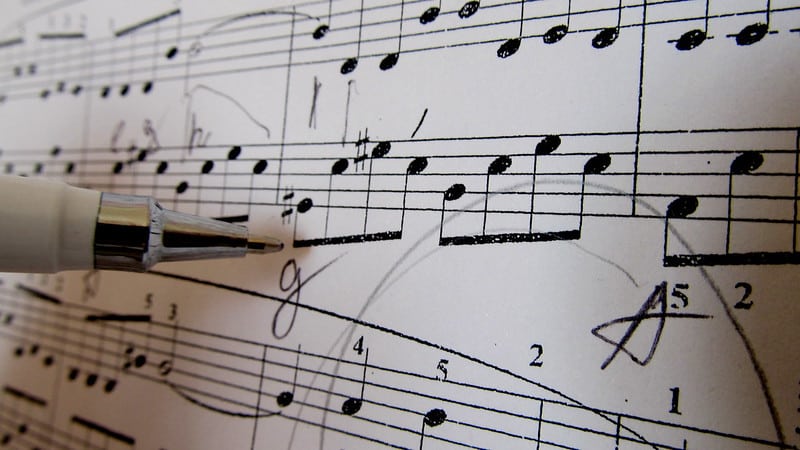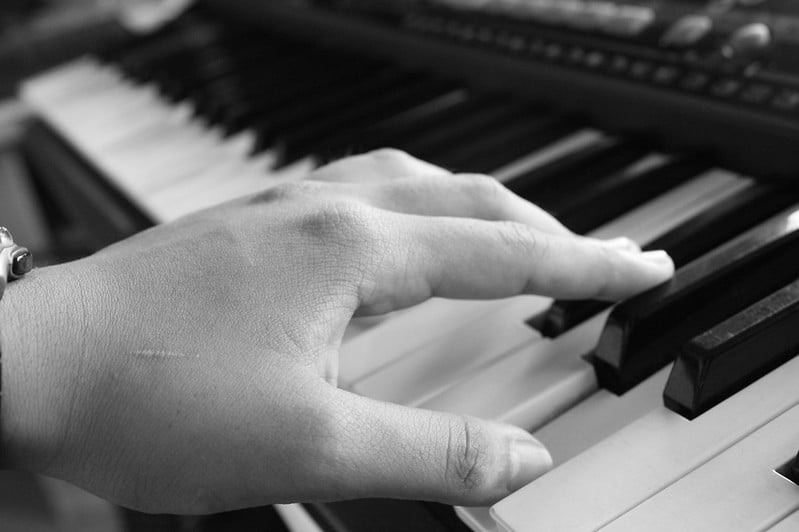
In this article you will learn 10 ways of identifying the quality of a triad and, after practicing them, you will be able to impress your music teachers and your friends! But, before that, you need to understand what a triad is and what are the physics behind it.
What is a triad?
A triad is a group of three notes and can be classified essentialy as major or minor, depending on the notes that form it.
If you do not know what a major or a minor triad is, you can think of a sequence of five notes – do, re, mi, fa, sol – but omitting the second and the fourth notes. In the example above we are left with: do – mi – sol, which is the “do triad” or the “c triad”.
However, to know if this is a major or minor triad you will either need to learn a little about musical theory or trust your ears.
The notes that form a triad can evoke certain feelings or sensations and the most interesting thing is that it doesn’t matter in which part of the world we were born, we a will perceive the relationship between frequencies the same way. Isn’t that amazing? How is that possible?
How To Tell If A Triad Is Major or Minor
Perceiving the sounds
In order to improve your perception skills, you should first understand that each note is a frequency and each frequency is a sound wave vibrating at a certain rate per second.
Upon reaching our ears, these waves will be translated as sounds. The exact same process happens with colors: each frequency will be will be perceived by the eyes as colors.
If we mix the colors yellow and blue, for instance, we undoubtedly get green, and our eyes will perceive that color as green.
When we deal with chords we are just “mixing” notes to generate a new sound color. Believe or not, the process of understanding the sounds is much more simple than understanding the millions of existing colors.
Quick test
Before we move on to the exercises let’s do a quick test to see how good your ear is:
1 – Try to remember the sound of a dog barking or a cat meowing. Easy, right?
2 – Now try to remember the voice of any of your friends or relatives. Can you hear them clearly?
If you could answer positively to both of the questions above your ear is perfect and your brain is able to recall aural information easily.
Memory plays an important role in the process of learning and that means your memory is more than good enough for this task. This is all that you need to master in order to tell confidently a chord is major and minor.
Now that you are ready, let’s move on to the real exercises:
1. Play and listen the triads daily
Preferably at the piano. Play the major triad, one not at a time, repeatedly, and rest for a few seconds. Repeat what you just played in your mind. After that do the same with the minor triads.
When you feel more confident, play the notes of the triad simultaneously, like a chord.
2. Sing as you play
Sing each triad as you play (but only if you can play them in tune). Sing repeatedly and you will notice how they will become part of you!
3. Understand their character
Major triads sound happy, cheeful. Minor triads sound sad, dull. This is a psychoacoustic phenomenon common to human beings, regardless of the individual’s background.
4. Listen to songs you like
Listen to songs you like and try to identify their character. See how the minor key and minor chords make the melody sound sad or nostalgic, whereas major keys and chords make the melody more bright and alive.
5. Test your self
Ask someone to play some triads or chords for you. Answer and evaluate your results. I am sure you will notice improvements from the first day!
6 – Translate the sound into images and feelings
When you listen to happy or sad songs, think of sceness or images that relate to that. Try to feel the happiness or sadness that fill your body when you listen to them.
That will make your brain establish a relationship between what you hear and what you feel. Do the same with every triad or chord you hear.
7 – Identify triads in the songs you play
Analyse the music and notice how the chords match what you are hearing. You will notice that happy songs have a predominance of major chords, and sad song have a predominance of minor chords.
8 – Ask help from a teacher
A good teacher can be the right guide for you. He or she will teach you how to sing in tune and notice what exactly you are missing in case you are facing any difficulties regarding the identification of chords.
9 – Sing scales
Sing scales regularly. Each triad is built and based on each degree of either a major or minor scale.
As you sing them, you will naturally understand their origin and how they relate to the music you are singing, after all, most songs are based on either major or minor scales.
10 – Revise
Revise what you learned regularly to make sure you don’t forget anything you have just learned. Everything we learn, in order to be fully absorbed by the brain, must be revised.
Make sure you rest your mind before each repetition and do not over practice. Take your time!
Important tip: avoid changing keys too often. That does not make sense musically and your brain may get confused with interpreting what it is really hearing at first. Keep it simple!
After you’ve followed all these steps, you will will never fail in recognizing chords anymore. It will feel as easy as telling different colors apart! As you build you palette of colors, litttle by little you should incorporate other types of chords such as augmented, dimished, etc.
Good luck and share what you’ve just learned with your friends!




